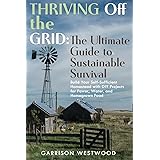The distinction between short-term emergency response and long-term medical preparedness is often misunderstood. As Dr. Bones highlights in the accompanying video, many individuals, even experienced outdoorsmen, incorrectly equate wilderness medicine with the comprehensive care required during a societal collapse. This fundamental misunderstanding leaves many unprepared for scenarios where modern medical facilities and professional assistance are simply unavailable. It is imperative to shift our perspective from relying on external aid to cultivating robust medical self-reliance, ensuring the well-being of our families when the conventional system falters.
Understanding the Core Difference: Wilderness vs. Long-Term Survival Medicine
Most people consider medical preparedness in terms of immediate emergencies or wilderness excursions. This conventional approach, often referred to as wilderness medicine or basic emergency care, operates under a crucial assumption: professional help is either on the way or readily accessible. Its primary objective is to stabilize a patient and facilitate their transport to a modern hospital or clinic.
The Conventional Approach: Wilderness and Emergency Care
In a standard wilderness emergency, the focus is on acute care and rapid evacuation. Medical education systems and an entire industry of supplies support this model, enabling individuals to manage immediate injuries or illnesses until advanced care can be reached. Consequently, individuals are often trained to perform initial assessments, stabilize conditions, and prepare for transport. This strategy works remarkably well when the infrastructure for rescue and advanced treatment remains intact.
However, this reliance on external systems creates a significant vulnerability. Your role in such a situation is temporary, a bridge to professional care. You are not expected to perform complex medical procedures or manage long-term health issues. The “buck” of responsibility, ultimately, passes to those with greater expertise and technological resources.
When “Help Isn’t Coming”: The Reality of a Collapse
In stark contrast, long-term survival medicine prepares you for a complete breakdown of societal infrastructure. A “collapse” scenario, as Dr. Bones describes, is not merely a few days without power after a hurricane. Instead, it signifies a prolonged period where modern medicine, hospitals, and even basic medical supplies are inaccessible, possibly indefinitely. This could stem from a major pandemic, widespread civil unrest, or a catastrophic terrorist event.
Under these conditions, the fundamental premise shifts dramatically. The rescue helicopter is not coming, and the nearest modern hospital may be non-existent or overwhelmed. Therefore, you become the primary, and often sole, medical provider for your family or group. The responsibility for diagnosis, treatment, and long-term care rests entirely on your shoulders, transforming you into the “end of the line” for medical decisions and actions.
Why Modern Medical Systems Can Fail: Lessons from History
The idea of modern medical systems failing might seem abstract, but history offers concrete examples. These events demonstrate how quickly even robust healthcare infrastructures can crumble under extreme pressure, forcing ordinary citizens into roles they never anticipated.
The Harsh Truth of Hurricane Katrina
One powerful example mentioned by Dr. Bones is Hurricane Katrina in 2005. When the storm hit New Orleans, it exposed the fragility of a system designed for normalcy, not catastrophe. Hospitals became isolated islands, understaffed, undersupplied, and overcrowded almost instantly. Medical assistance teams were overwhelmed by the sheer scale of the disaster, with thousands of people needing help simultaneously.
Consequently, countless citizens became their own medical caregivers, making critical decisions without professional guidance. This event starkly illustrated that even in a developed nation, the promise of modern medical facilities can become an empty one when disaster strikes on a massive scale. Basic wound care, sanitation, and managing chronic conditions became personal responsibilities, not services rendered by professionals.
Beyond Natural Disasters: EMP, Pandemics, and Civil Unrest
While natural disasters like hurricanes reveal vulnerabilities, other threats pose equally severe, if not more prolonged, challenges to medical infrastructure. An Electromagnetic Pulse (EMP) attack, for instance, could disable electronic grids and communication systems across vast regions, rendering modern medical equipment useless and supply chains non-functional. Such an event would push society back to a pre-industrial medical era overnight.
Furthermore, global pandemics can quickly overwhelm hospital capacities, leading to shortages of beds, staff, and critical medications. Civil unrest or widespread conflicts can also disrupt essential services, making travel to hospitals dangerous or impossible. In each of these scenarios, the underlying principle remains the same: reliance on external medical aid becomes a dangerous gamble, underscoring the vital need for personal and community-level medical self-reliance.
Embracing Medical Self-Reliance: Becoming Your Family’s Lifeline
To prepare for a future where you are the sole medical resource, a proactive and comprehensive approach is essential. This involves a fundamental shift in mindset, coupled with tangible preparations in both supplies and knowledge. Becoming medically self-reliant is not about replacing an entire hospital; it is about providing the necessary care to keep your family healthy and functional, even when everything else falls apart.
Stockpiling Essential Medical Supplies for the Long Haul
Accumulating medical supplies goes far beyond a basic first-aid kit. For long-term survival medicine, you must think in terms of quantities and varieties that can sustain care for weeks, months, or even years. Consider not just bandages and antiseptic, but also antibiotics, pain relievers, anti-inflammatory drugs, anti-diarrhea medication, and allergy treatments. Moreover, items for managing chronic conditions, such as blood pressure medication or insulin, if applicable to your family, are critical.
Furthermore, think about dental emergencies, which can be excruciating and debilitating without professional help. Equip yourself with dental pain relief, temporary filling materials, and tools for basic oral hygiene. Remember to store supplies securely, away from extreme temperatures and moisture, and rotate them regularly to ensure potency. Include items for wound closure, such as sutures or sterile strips, and tools for minor surgical procedures like scalpels and forceps, all sterilized and properly packaged.
Acquiring and Adapting Crucial Medical Knowledge
Possessing supplies without the knowledge to use them effectively is insufficient. Obtaining comprehensive medical knowledge is paramount. Begin with certified first responder or wilderness medicine courses, as these provide an excellent foundation in immediate care, patient assessment, and stabilization techniques. However, as Dr. Bones emphasizes, you must then adjust this knowledge to fit a collapse scenario.
This adaptation involves learning how to manage conditions without modern diagnostic equipment, administering medications with limited resources, and providing long-term care for injuries or illnesses that would typically be treated in a hospital. Study topics like hygiene and sanitation to prevent disease, basic anatomy and physiology, wound management (including infection prevention and treatment), and even rudimentary surgical skills. Educational resources like “The Survival Medicine Handbook” become invaluable guides, offering practical advice tailored to off-grid or prolonged disaster situations.
Preparing for the Unexpected: Dental and Other Emergencies
Beyond common injuries and illnesses, long-term survival medicine necessitates preparing for less frequent but equally impactful events. Dental emergencies, as highlighted, can be incredibly painful and incapacitating, making basic functions difficult. Investing in basic dental instruments, pain relief, and temporary filling kits can make a significant difference. Consider learning about tooth extraction as a last resort, understanding the immense risks involved.
Moreover, think about mental health. Prolonged stress, isolation, and trauma during a collapse can take a toll. Understanding basic psychological first aid and having strategies to maintain morale and mental resilience within your group are crucial components of holistic medical preparedness. Being medically self-reliant means being prepared for every facet of human health, ensuring you can keep it together, even when everything else falls apart.











